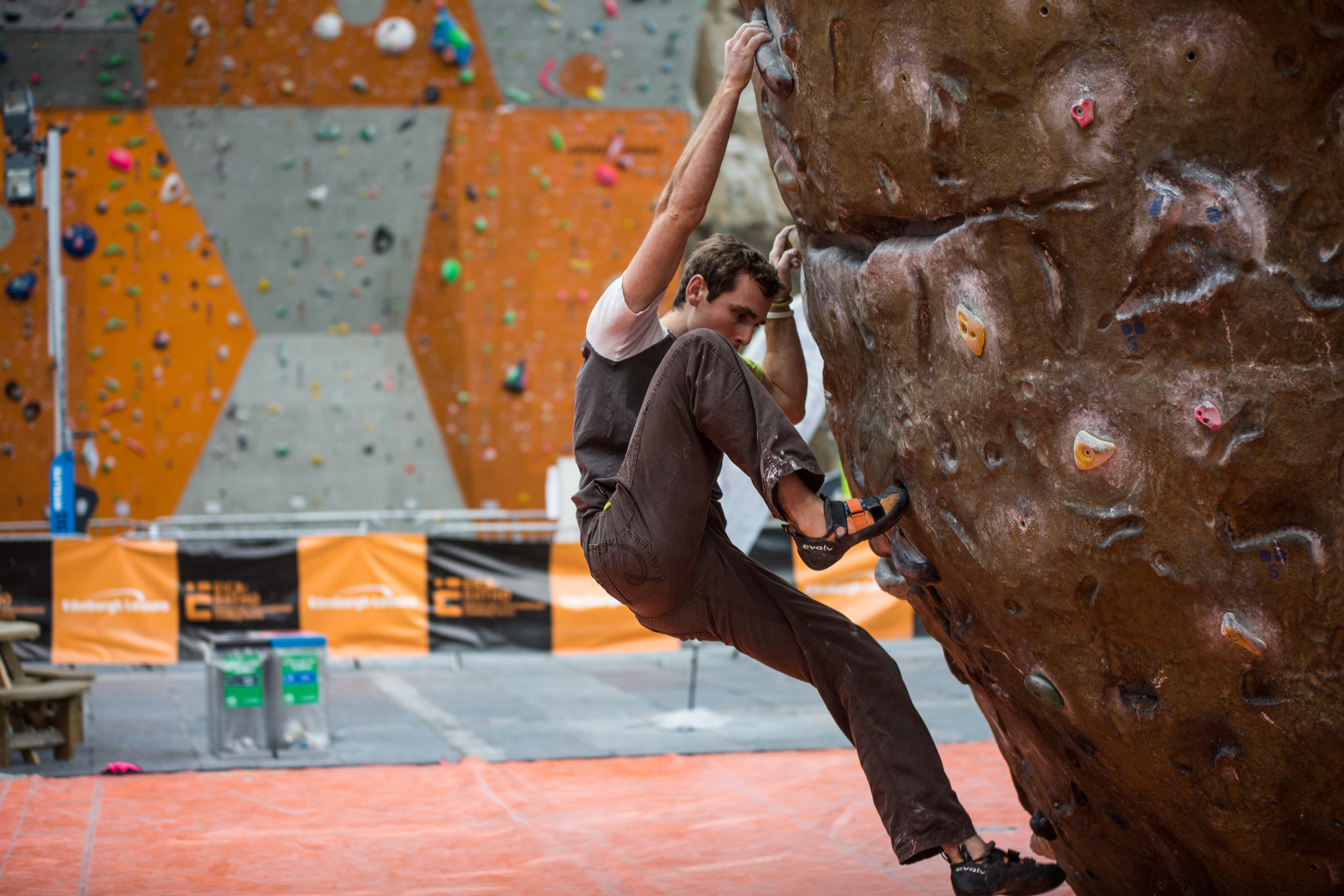Physical Training on Boulders
The best training for climbing is climbing! There are a myriad of training aids and devices nowadays that are said to develop unfound levels of strength and endurance like never before! Only one problem; what use are they if you can't apply it? That's not to say they aren't useful; but I feel there is far too much focus being put on Fingerboards, Campus boards, Gymnastic Rings and the like as an all encompassing way of getting strong for climbing when in actual fact they are only supplementary aids and should be left as that.
Without a doubt Bouldering is the best means of getting good transferable strength gains for your climbing. This can be done in a number of way using various exercises and strategies to focus on "Strength" over "Power" but also to maximize effectiveness in the transfer to your climbing.
Boulder Projects (30 mins to 1.5 hours)
"Boulder Projects" are what they say on the tin – hard boulder problems that you need to repeatedly try and work hard on until you can finally climb them. This is arguably the best way to train for transferable strength because you're practicing real skills at the same time as well as it being an all-encompassing physical exercise.
When doing boulder projects it's important to pin down exactly what you want to train. For example, doing dynos and big moves between slopers is a very power orientated style of boulder problem; whereas to train strength more specifically it would be better to focus on smaller more intense movements with worse hand holds.
If I was doing a boulder project session, I would focus on between 2 and 5 boulder problems in the entire session aiming to spend 20-30 minutes on each one. Bear in mind, to have good gains on a project boulder you need to allow for adequate rest between attempts and working goes where you don't start the boulder from the bottom.
Example Session:
Boulder 1 (30 minutes) – 10 move problem on a 45 degree wall with small but positive edges, smaller movements and slopey feet.
This will develop good static upper body strength, finger strength and core body tension for steep walls.
Boulder 2 (15 minutes) – 6 move problem on a 30 degree wall with big slopers, shoulder compression moves and mostly feet to hand moves with heel hooks.
This will develop good sloper strength, shoulder stability and core strength when it comes to compression style movements.
Boulder 3 (15 minutes) – 8 move problem on a vertical wall with small slopey edges, bad feet and some balancy moves
This will develop good finger strength but more so an awareness of balance and weight through your feet
Boulder 4 (15 minutes) – 12 move problem on a roof with big positive round holds into a mantle onto a vertical section on slopey crimps
This will develop a powerful style, amazing body tension for overhangs and practice technical mantles as well as the transition from bigger holds in roofs to smaller ones on a vertical plain. To a certain degree this is also a power endurance problem!
Boulder 5 (15 minutes) – 7 move problem on a 45 degree wall with positive 2 finger pockets for hands using the same pockets for feet also
This will develop good open hand and two-finger pocket strength as well as teaching precision in technique and good core tension.
Slow-mo Bouldering + 3 Second Locks
Aerobic Climbing Training
If you want to isolate strength more specifically, then why not try and climb a set of boulders a little bit below the intensity of a "Boulder Projetct" at a slower speed. This will isolate static contraction from lock offs to shoulder tension and finger strength!
Even better again would be to do "3 Second Locks". This exercise is a good one for lock of strength and technique, the reason being because:
- You have to lock off and hover your moving hand above the next hand hold for 3 seconds
- You can only do this if you have a good body position i.e. it teaches good technique!
I think it's important to not make these too easy! If they are then you will be able to lock of from any position. If they are at just the right level however it can be difficult to find the right body position, which certainly adds more interest to the exercise.
Mileage Bouldering
As much as it's important to climb at your limit to train strength, conditioning is just as important! Including a stint of mileage bouldering where you climb anything from 10-30 boulders that are all within your limit is a good way to train technique and consolidate some of that boulder strength with lighter strength based movements.
Even though it's not at your limit, it shouldn't be easy! I'm talking anywhere between comfortable onsight level boulders to the 3-5 attempts level of intensity. Those boulders should be mixed in with easier ones so you don't tire yourself out by trying too many harder boulders in a row.
